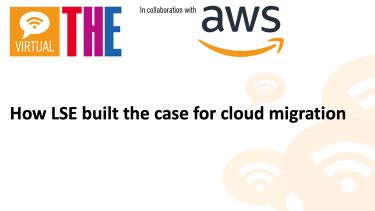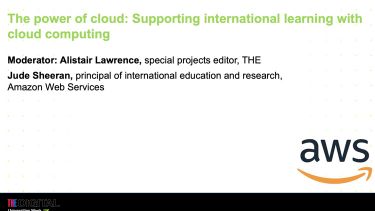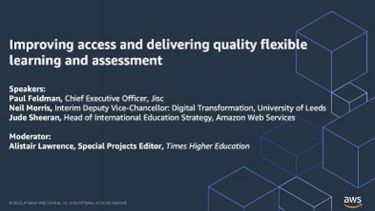Educators should take an empathetic view of both teaching and student data, experts believe
The global transition to digital learning, and the rise of edtech in particular, has brought about substantial changes to the student experience in recent years. As universities plan for flexible learning programmes post-Covid, one of the biggest questions educators face is how to make the most of the many new tools available to them.
Meeting for a webinar discussion hosted by Times Higher Education in partnership with Amazon Web Services (AWS), experts from industry and academia considered some of the challenges ahead.
The Covid-19 pandemic forced universities to pivot their teaching strategies rapidly, noted Ian Pickup, pro vice-chancellor of education and experience and chief operating officer of the University of East London.
While students “have largely welcomed the opportunity to start their learning [remotely]”, the sudden shift highlighted the very real problem of digital poverty in the UK, Pickup warned. “We need to guard against the notion that accessibility is a given.”
Gerd Kortemeyer, director of educational development and technology at ETH Zurich, added that the shift to remote learning gave universities the opportunity to widen accessibility by expanding student numbers – but this, too, came with challenges.
“Higher education is more than just knowledge; it is also an acclimatisation to an academic environment,” he said. “What we are struggling with is, what should that look like? How can we balance personalised education with peer support and networking and make sure that these diverse learners don’t just stay in their own bubble?”
From her experience working with institutions across the sector, Sam Blyth, director of partnerships and business development at PebblePad, told the panel that she could see a pattern emerging of increasingly “blurring the lines between sectors. Universities are starting to offer apprenticeships, vocational colleges are offering degrees,” she said, adding that this, too, would help to further accessibility and diversity in education.
Access to data, meanwhile, is opening doors for universities seeking to offer a more personalised learning experience to students. But the technology available to educators was still “far ahead of the decisions that schools and universities are making about how they reach learners at any age”, said Jude Sheeran, principal for international education and research at AWS.
Data privacy, for example, is subject to personal and national policy, he said, limiting the ways in which universities might utilise student data.
One possible solution to privacy concerns, Kortemeyer suggested, was that learners, not institutions, should retain ownership of their personal data. “One model for the future is that the learner takes their data with them from institution to institution, like with virtual [medical] patient records,” he suggested.
Creating a meaningful and personalised experience for students would likely require a fair balance between technological innovation and human interaction, the panel concluded. AWS platforms, for example, can alert course leaders if a student’s attainment and engagement data suggests they are falling behind.
“If we can [utilise] pre-entry data while also having an understanding of prior life experience, we can start to map, model, predict and intervene before things go wrong for students,” said Pickup. “That is a huge advantage for all institutions to work towards.”
Find out more about Amazon Web Services’ work in the public sector.








